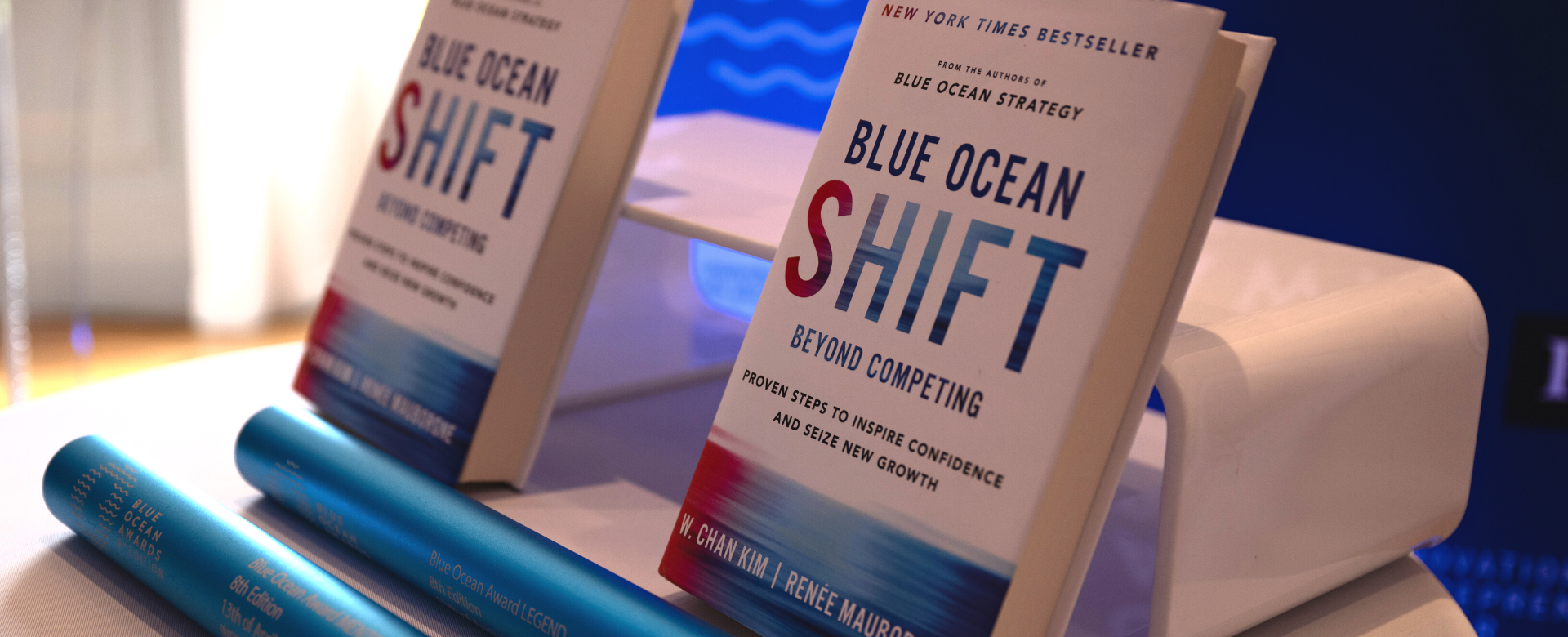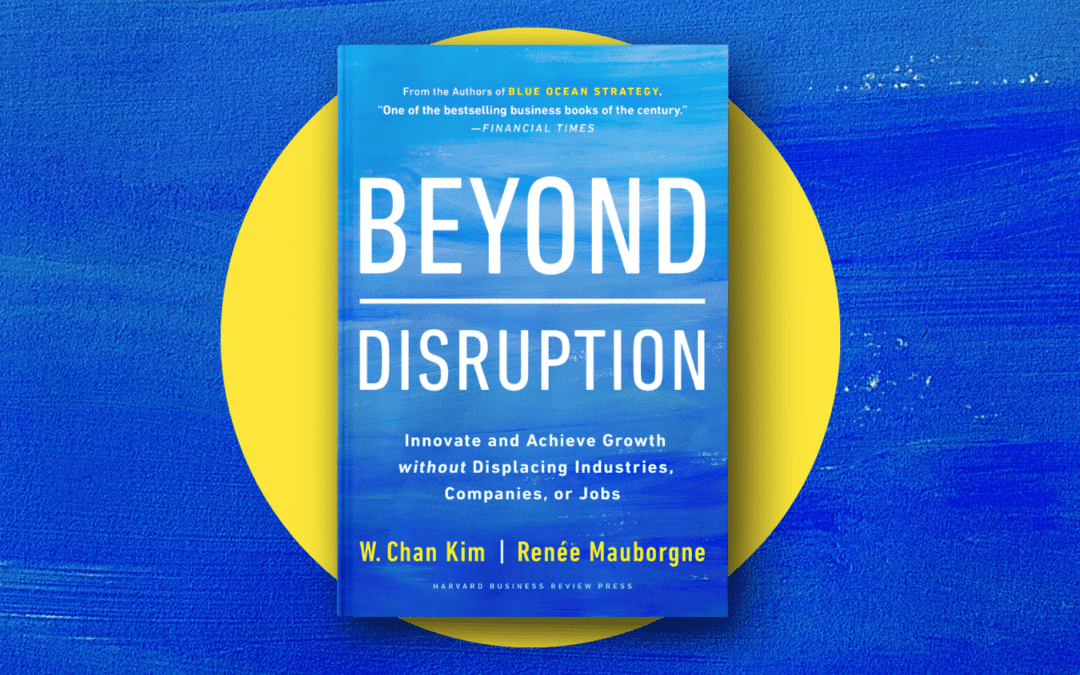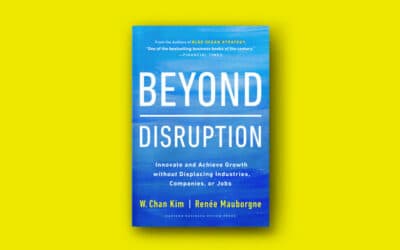Written by Melanie Pipino, an Institute Fellow at the INSEAD Blue Ocean Strategy Institute.
Image created by OpenAI’s DALL·E
The fusion of fashion and technology is no longer a glimpse into the future; it’s our present reality, as exemplified in the 2023 major Fashion Weeks featuring AI-influenced collections. As McKinsey’s March 2023 report indicates, generative AI could significantly boost profits in the apparel, fashion, and luxury sectors by $150 to $275 billion.
Beyond the runway, apparel retailers are equally immersed in this AI-driven transformation with AI assistance in designing fabrics and collections, enhancing customer experiences with features like virtual clothing try-ons, optimizing supply chain management, and defining future trends.
But can AI also help create blue oceans in fashion? Or in other domains?
The answer is yes.
Take Stitch Fix, a San Francisco-based e-commerce company founded in 2011 by Katrina Lake. Before AI became the hot trend it is today, Stitch Fix revolutionized fashion retail by blending AI with personal styling services, opening up a blue ocean of new market space.

Stitch Fix: Pioneering AI in Retail
As our case, “Artificial Intelligence: Stitch Fix – A Blue Ocean Retailer in the AI World” brings to light, Katrina Lake created a unique opportunity in the retail landscape. She observed the common frustration of people endlessly scrolling through numerous pages online, trying to find the perfect piece of clothing.
This experience contrasted sharply with the personalized shopping services available to the wealthy, who had personal shoppers pick out outfits perfectly suited to their style, body type, and preferences.
Lake wanted to combine the best of both worlds to open up a new market. Her idea was to send customers curated boxes filled with clothing and accessories that they would love, but that they hadn’t chosen themselves.
This would bring an element of surprise and delight, making the experience as personalized and fun as having a personal shopper, yet making it accessible to everyone while saving people money, time, and the usual frustration associated with online shopping.
But how to make this happen?
Lake recognized the essential role of stylists in delivering a highly personalized service. Yet, she also understood the importance of leveraging technology, especially AI, for scalability and low costs.
What if customers provided a detailed style profile, including their size, favorite colors, preferences, and price criteria? AI could use this information for efficient initial matching.
These AI-generated selections would then be reviewed by stylists, using their knowledge, creativity, and expertise, for the final selection. This approach would enable Lake to offer shoppers an easy, at-home, personalized shopping experience, and a feeling of surprise, creating a fundamentally different and significantly superior buyer experience while achieving low costs.

This offering has resonated deeply with consumers, leading Stitch Fix to success. In 2017, Stitch Fix went public, making Lake, at the age of 34, the youngest woman ever to launch an IPO at the time. In 2023, the company reported revenues of over $2 billion from its 3 million+ customers.
Understanding that tech companies are valued higher by investors than retail companies, Lake smartly positioned Stitch Fix as a tech company within the retail sector – not merely as an online retailer. To underscore its tech company status, unlike tech giants like Facebook or Google, which often keep their algorithms confidential, Stitch Fix took a transparent route by creating an interactive Stitch Fix’s Algorithm Tour.
This tour showcases the varied applications of AI in their operations, influencing everything from warehouse assignments, recommendation systems, inventory management, new style development, and so on.

But while Stitch Fix has become a tech powerhouse in retail thanks to its innovative use of AI, the core of its success ultimately lies in value innovation, not technology innovation.
Value Innovation is the simultaneous pursuit of differentiation and low cost, creating a leap in value for both buyers and the company, that can be achieved with either new or existing technology. Katrina Lake has skillfully used technology as a means to an end—achieving value innovation. She didn’t adopt AI for the sake of technology. Instead, she leveraged it as a tool for creating superior value for buyers.
Katrina Lake vs. Jeff Bezos: Surviving Amazon’s Onslaught
So powerful was Stitch Fix’s blue ocean and surging growth, that it rapidly caught the eye of not only countless customers but also Amazon’s Jeff Bezos. To challenge Stitch Fix, Amazon launched Amazon Prime Wardrobe in 2017, a service allowing Prime members to try clothes, shoes, and accessories at home before purchasing.
The competition heated up in 2019 with Amazon’s red ocean imitative move: it introduced “Personal Shopper by Prime Wardrobe,” a service modeled after Stitch Fix’s, blending artificial intelligence with stylistic expertise to deliver personalized boxes of clothing to customers’ doorsteps.
As the biggest online sales platform in the world, with the advantage of an enormous customer base, a large amount of user data, and powerful AI capabilities, Amazon would appear to be a huge threat to Stitch Fix.
But was it?
The answer is no.
Its competitive benchmarking failed. When you create a blue ocean and scale it, attempts by red ocean competitors often fall short. This was not Bezos’s first setback resulting from a red ocean strategic move.
Think about A9, Amazon’s search engine that was supposed to go beyond Google’s blue ocean. It failed.
Or Endless.com, Amazon’s online shoe store that competed head-on with Zappos, which had created another blue ocean. It never took off, leading Bezos to acquire Zappos instead.
As our case “Katrina Lake vs Jeff Bezos: Surviving Amazon“ highlights, a blue ocean comes with its own barriers to imitation. Even Amazon, with all its resources and tech prowess, couldn’t make a dent in Stitch Fix and discontinued its Personal Shopper service in March 2023.
Explore Further: In-Depth Case Studies on Stitch Fix
Ask yourself these two questions:
- We typically think about AI as a driver for productivity, boosting our efficiency. Yet, how can you, like Katrina Lake, utilize AI to offer a leap in value, not simply to lower costs?
- How could you leverage AI to redefine industry boundaries, and open up a blue ocean of new market space?
Check Out the Case Studies
Want to learn more about Stitch Fix? Explore our two bestselling cases.

Artificial Intelligence: Stitch Fix – A Blue Ocean Retailer in the AI World
Author(s): KIM, W. Chan, MAUBORGNE, Renée, PIPINO, Melanie
Case Study
HBSP | Case Centre | INSEAD
Teaching Note
HBSP | Case Centre | INSEAD

Katrina Lake vs Jeff Bezos: Surviving Amazon
Author(s): KIM, W. Chan, MAUBORGNE, Renée, PIPINO, Melanie, KOO, Oh Young
Case Study
Teaching Note

















